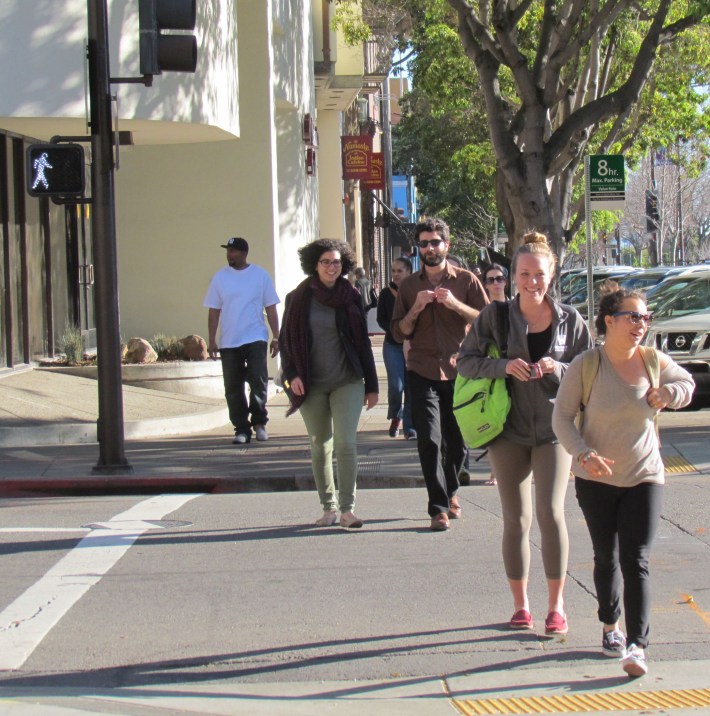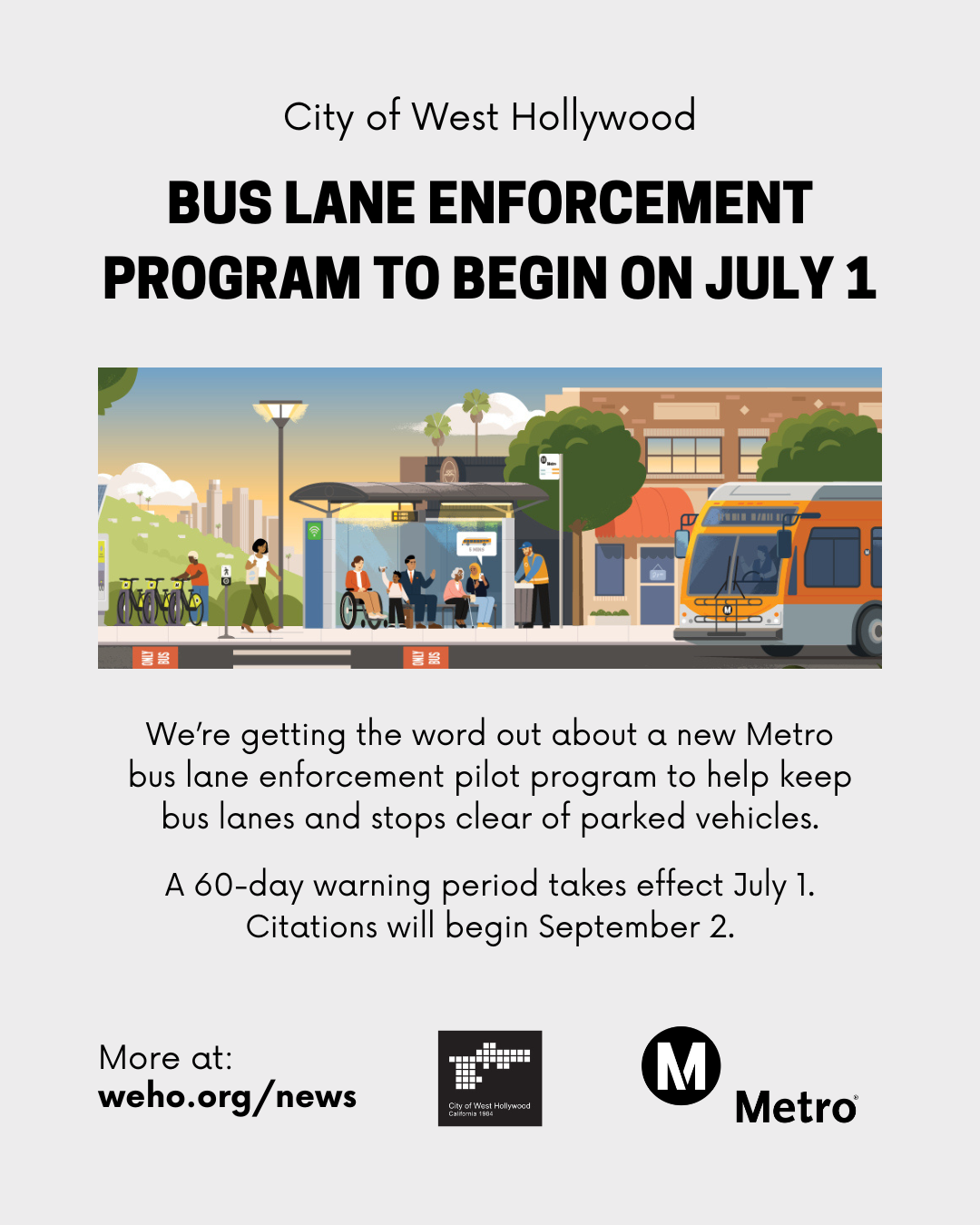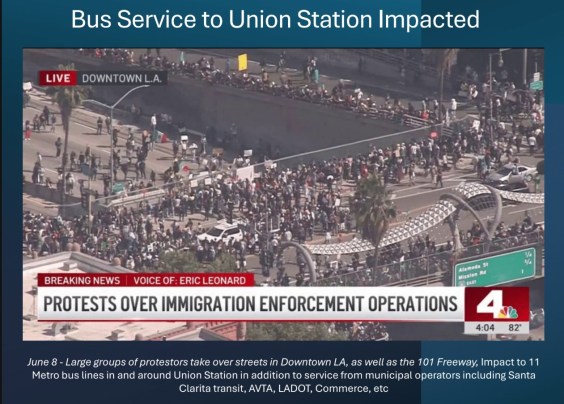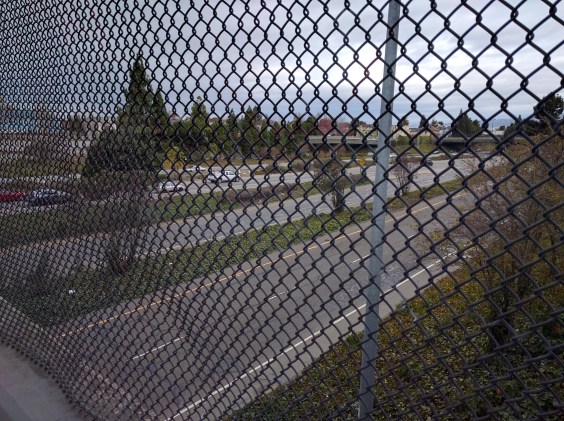
It may be that TOD—transit-oriented development, which puts high density housing near transit to encourage people to travel by means other than by car—may be putting too much emphasis on the T. That is, the fact that people have a train station near at hand may not necessarily be what encourages them to use it. Other things—like whether they have access to free parking—seem to have more influence on car ownership and driving.
This is the conclusion reached by Dan Chatman of the University of California at Berkeley after surveying households near rail stations on the East Coast. Writing in the fall issue of Access magazine, Chatman says that planners who emphasize the closeness of rail transit to high-density housing may be missing other more important factors.
“Developing dense housing near rail stations with mixed land uses and better walkability is intended to encourage people to walk, bike, and take transit instead of driving,” writes Chatman. Studies show that households living near transit tend to use it more, but the reasons for that are not as obvious as one might think.
“Using transit more is not the same as driving less,” he writes.
And even if people in TODs do drive less than people elsewhere, we cannot be sure that transit is responsible. Easy access to a rail station might encourage people to walk rather than drive—but so too might wider sidewalks, narrower streets, and closer destinations. Denser places also tend to have worse traffic and fewer places to park.
Chatman used the results of his survey to look at what influences car ownership and commute mode, among other things. He found that the presence of a nearby rail station doesn't have that much of an impact on whether people own cars or drive to work. What does make a difference is the number of parking spaces they have available to them, whether those are on the street or in garages or driveways.
He found that—surprise!—where there is plenty of free parking available, people tend to own more cars and drive more, and consequently use transit less.
“We generally think of parking usage as a measure of demand for driving,” Chatman told Streetsblog in a phone interview. “Where instead, parking supply ought to be thought of as a driver for driving. People do drive more if we give them free parking.”
Other things that also make more of a difference on car ownership and driving than rail, according to Chatman's findings, are the number of nearby jobs, the number of nearby grocery stores, population density in the area, distance to downtown, and access to bus transit.
TOD is usually built near rail, because it's considered more “permanent” than bus service, which can be easily changed or rerouted. But access to a good bus network may actually matter more if what you want to encourage people to drive less. Access to rail may encourage commute trips by train, but it doesn't necessarily mean people will use the train for other trips. “Transit doesn't carry as many trips as walking and biking,” said Chatman, especially for noncommute trips. Encouraging other kinds of travel, especially for things like grocery trips, may mean making a bike ride to a local grocery store safe and easy by building multiuse paths and encouraging grocery stores to locate in high-density residential districts.
An unintended consequence of concentrating TOD near rail is that it could encourage people to move farther away from dense areas. Rail, Chatman reminds us, was historically one of the biggest drivers of sprawl in the US.
“Current TOD policies might actually decrease overall density, because rail is good at serving long trips,” he said. “You get development near rail, and people move in and use it—but only for their commute.” Other trips are served by whatever mode is most convenient. If there's lots of parking, that may mean by car.
Chatman found that new housing built near rail tends to have more parking than older housing, which reflects many current local zoning regulations requiring a minimum number of parking spots per unit—as opposed to older high-density housing that was built before those zoning laws were passed.
This is important when considering the impact of California policies like S.B. 375 (which required regions to adopt Sustainable Community Strategies) and S.B. 743 (which eliminates traffic congestion as an environmental impact under environmental law). Both of those recent laws place a lot of emphasis on the importance of high density housing near transit to get people to drive less. But if new transit-oriented development provides plenty of parking, all that regulation, encouragement, and arguing about environmental impacts may not produce the desired results.
“If access to rail is not a primary factor in reducing auto use, it could be a blessing,” writes Chatman, “not only because rail infrastructure is expensive, but also because the amount of available land near rail stations is limited.”
“But focusing primarily on TODs to reduce greenhouse gases could be a great mistake,” he writes.
A better strategy would be to provide incentives for building smaller rental units with less on- and off-street parking in locations with better bus service and higher employment density. At the very least, TODs should be developed with less parking. If they are not, they will not reduce auto use.
Chatman discusses his results in the fall issue of Access, available online here. Other articles in the current issue, in addition to the one highlighted yesterday on Streetsblog about the benefits of bike-share systems, are a look at life-cycle impacts of TOD, a history of planning for freeways in the U.S., and suggestions about finding common ground when faced with seemingly insurmountable differences of opinion about what our cities should look like.





